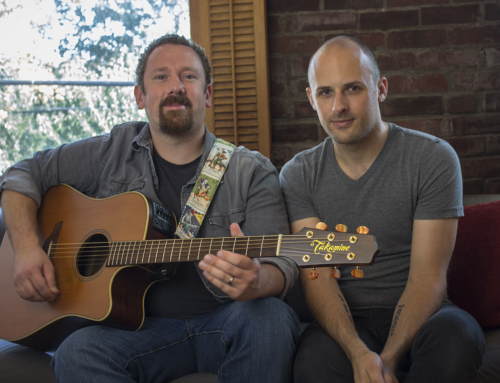Led Zeppelin was a band that did not shy away from experimenting with their sound. Throw on any Zeppelin album and you’ll hear a mix of heavy and loud songs mixed with soft and delicate acoustic tracks that fuse rock, blues, and folk, into a unique blend.
One of the reasons Zeppelin stands out from the rest of the crowd is because Jimmy Page, the band’s de facto leader, spearheaded exploration into other genres, drawing inspiration from music around the world. While vocalist Robert Plant would incorporate a variety of subjects lyrically, most often these influences could be heard in the alternate tunings Page would adopt for his guitar.
Most songs in popular music feature guitars that are in standard tuning, with the low to the high strings tuned to the following pitches: E-A-D-G-B-E. Any deviation from those notes is considered an alternate tuning. This opens up a lot of possibilities to create new sounds and voicings for the guitar by changing all or some of those string tunings. Page would consistently delve into an array of tunings for at least a few tracks on every album, creating interesting sonic flavors that help make so many Zeppelin tracks unique and memorable.
Here are six of the best uses of Led Zeppelin alternate guitar tunings!
Ten Years Gone
Drop D Tuning (D-A-D-G-B-E)
Drop D tuning only involves tuning the low E string down to D, adding a little depth and heft to the guitar. This tuning is nothing unusual nowadays, especially as it became widely popularized by rock bands in the ’80s and ’90s, and certainly by many metal acts. But here is where Page helped to pioneer the tuning.
Kashmir
Celtic Tuning (D-A-D-G-A-D)
This tuning creates cool droning notes that hang as Page plays those iconic riffs. While Page uses the tuning here to powerful effect, he also uses it in a radically different style on one of his folk-influenced compositions, “Black Mountain Side,” which he often played live as a medley with his Yardbirds tune, “White Summer,” in the early and later Zeppelin tours.
Friends
Open C6 Tuning (C-A-C-G-C-E)
Similar to “Kashmir,” this tuning allows Page to let notes ring throughout the track, which is inspired by the music of India. Page and Plant famously re-recorded the song in 1972 with local musicians in Bombay, adding instruments like sitars and tablas. Page also uses this tuning for “Bron-Y-Aur” and “Poor Tom.”
Going to California
Open G Tuning (D-G-D-G-B-E)
Page’s Open G tuning creates an entrancing interplay with John Paul Jones, who abandons his bass for a mandolin on this track. A handful of other Zeppelin tracks, including “That’s The Way” and “Black Country Woman,” are also in Open G tuning.
When The Levee Breaks
Open F Tuning (F-A-C-F-A-C)
Arguably, with this song the tuning on the low strings doesn’t even matter, as Page plays the whole song on just the top four strings. Page grabs the slide for this one, matching Plant’s wails while Jones and drummer John Bonham pound away the rhythm.
The Rain Song
Open Gsus Tuning (D-G-C-G-C-D)
I saved the best for last. This song is gorgeousness and gorgeousity. While this is a Zeppelin list, I feel the Page & Plant acoustic rendition they performed for their “UnLedded” MTV reunion special best captures the incredible sound of the tuning. Listen as every note sweetly pours out of Page’s guitar.





Ive been playiing my guitar tuned up 1/2 tone F Bb Eb Ab C F because my strat has a wicked tone to that tuning. Do many guitarists do the same? Ive always heard they tune down half step??is there an advantage to playing 1/2 tone higher
Some guitarists tune up to change the key, usually to pair with a vocalist singing slightly higher. If you check out more recent performances of The Who, you’ll sometimes see guitarist Pete Townshend playing with a capo on the first fret, which would be the same as what you’re tuning to. There are a bunch of bands that tune down a half step. It became pretty standard practice in the grunge era for a darker and slightly heavier sound. I say play however it sounds good to you!
I’ve heard that Joe Perry was asked by then-producer Bruce Fairbairn (RIP) to play the solo to Janie’s Got A Gun, tuning his guitar a half-step higher, to emphasize tension.
Hi,
What a great compendium of Led Zeppelin tunings! You might want to correct the heading on Going to
California “Open G Tuning (D-G-D-G-B-E)”–no E in that tuning to my knowledge.
I want to say the same as Larry T, I’ve never seen Open G tuning with a high E, always d?
open f huh? So, what is CFCFAC then to you?
I like tuning down a half step because, I can make my strings last longer. When they finally lose their ring. I can tighten them up a little bit and get the ring back. If you like to change your tuning; like I do, your strings can lose the ring pretty quick
SOOOOO pretentious. Thank goodness for the punk revolution of the mid-late 70s!
Please don’t misunderstand it. It’s about ergonomics — ease of playability. Go listen to The Rain Song, the live version from the album or movie of the same name: The Song Remains The Same and be entertained. It is not pretentious gimmick, it is chosen to be done in that way for the pursuit of beauty. The fact that a double neck guitar which was used is visually pleasing is incidental to the fact that it had to be used so that there would be a smooth transition moving from the ending of the title track song ‘The Song Remains The Same’ to the beginning of the next song ‘The Rain Song’
I love the fact that we have internet and YouTube now. When I was learning guitar in 80s, didn’t even know what a capo or alt tuning was. So yes, learned a carpal tunnel Hotel Cal barring version and a stretch Rain Song in standard tuning. Years later knowing the tricks made life and sounds way easier and better, but those versions I recorded on my Certron tapes are pretty cool to hear back 35 years later.
I love punk, Think of Beatles in the Cavern Club or in Germany!
Jimmy Page ‘s guitar work is far beyond Punk.
I love Page’s ability to create vastly differing songs, you don’t get that in punk.
Well maybe Westerberg
. But he’s the exception not the rule.
Open tunings go all the way back to the Delta so mind ur manners! And explore!!!